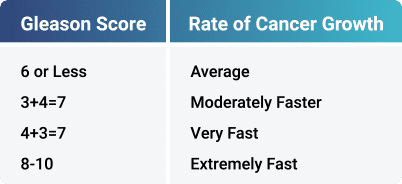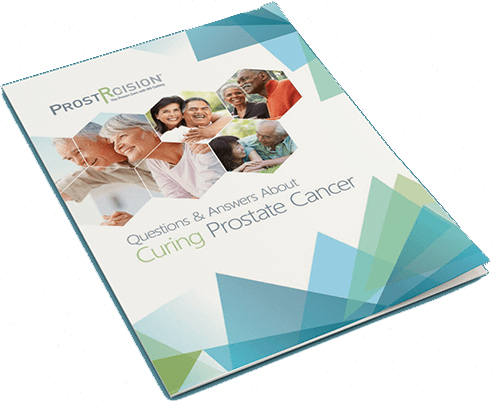The Gleason score is something that you will become acquainted with as you move through your prostate cancer diagnosis. It's important to know what this score means and how it relates to your future treatment plan. Here are some of the common questions you may have about understanding your Gleason score on your pathology report.
A Gleason score predicts how fast your prostate cancer is growing. Named after Dr. Donald Gleason, the pathologist who developed this system in the 1960s, it’s commonly used today and is one of the most important measurements in a prostate cancer pathology report.
The Gleason score consists of two numbers called grades, which range from 1-5. Grade 1 indicates slow growth prostate cancer, and grade 5 is rapidly growing cancer. There are two numbers, known as the primary and secondary grade that are used to get the Gleason score.
The primary grade is given based on the predominant cell pattern seen in the cells of a needle core biopsy. The second number, the secondary grade, is the next most common cell pattern seen in the biopsy. These two grades are then added to get the Gleason score. The table below shows what each score indicates for the rate of cancer growth.

A 12-needle biopsy is the standard procedure for a prostate biopsy. The cell samples are sent to a pathologist, a doctor who examines the cells under a microscope, to determine whether cancer is present. Based upon what is seen in the cells, two grades are usually assigned – one to the primary cell pattern found and one to the secondary cell pattern.
A grade of 1 means that the cells appear healthy. A grade of 5 indicates the cells have mutated. Once a grade is assigned to both the primary and secondary cell patterns, they’re added together to create a total between 2 and 10. Any totals between 2 and 5 are not assigned a Gleason score because the cells are still mostly healthy. A typical Gleason score will be between 6 and 10.
A Gleason score of 6 typically means the prostate cancer is low-grade and typically slow growing. Treatment may be delayed, but your urologist will discuss what’s right for you.
Treatment for a patient with a Gleason score of 7 will be impacted by which number is first. A Gleason score of 3+4 is less aggressive than a patient whose Gleason score is 4+3. Even though they both add up to 7, treatment plans will depend on the order of the numbers added together.
A Gleason score of 8, 9 or 10 is considered high-grade and more likely to grow and spread quicker than a lower score. However, a score of 8 is slower growing than a score of 10. Patients with an 8, 9 or 10 may need to start treatment to keep the cells from growing outside the prostate or from spreading further in the body if they have already started to grow outside the prostate.
Yes, there can be more than one Gleason score for the different needles that pulled out cells. That’s because the cells may look different in some areas of the prostate compared to other areas. Your urologist will usually use the highest Gleason score to determine if or when prostate cancer treatment is needed and what would be most effective.
It is always the patient's right to obtain a second opinion about a cancer diagnosis or any other medical condition. Talking to a radiation oncologist will allow them to review your pathology report and request any other tests they may need to make sure you have the right information to make a decision about your treatment plan.
If you would like one of our radiation oncologists to review your pathology report, you only need to sign a release so we can have your biopsy material sent to us. We can then determine the Gleason score our team sees. Most of the time, the Gleason score we determine is the same, but not always. Because the Gleason score is the most important issue about your particular cancer, we want it to be as accurate as possible.
It's critical to personally research prostate cancer treatment options to make an informed decision that is best for you and your family. And, with few exceptions, your first treatment gives you the best chance for success. If your urologist has told you that you have a Gleason score of 6 - 10, or you would like a second opinion, request an appointment for a consultation.

Make an informed prostate cancer treatment decision. Our 40-page, comprehensive guidebook provides answers to our most frequently asked questions from men diagnosed with prostate cancer, and compares various treatment methods, cure rates and side effects. Our team can also connect you with one of our oncologists at no cost.
Quickly and efficiently build the materials you need to support your inbound marketing strategy. Drag and drop building blocks including testimonials, forms, calls-to-action, and more.